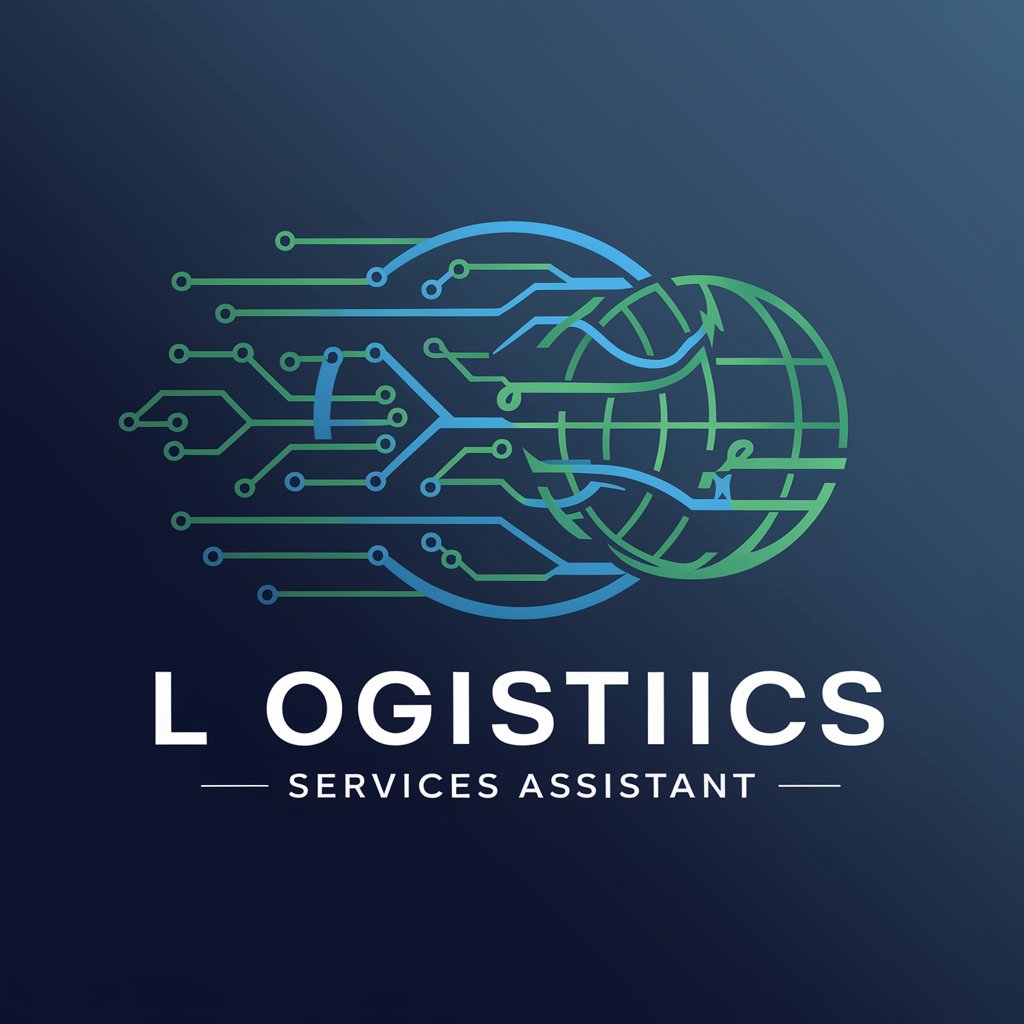Tech-enabled Logistics Services Assistant - Logistics Optimization Tool

Welcome! Let's optimize your logistics operations efficiently.
Empowering Logistics with AI
Can you help me optimize my supply chain by...
I need advice on the best software for managing...
What are the latest trends in global transportation...
How can I improve my route planning to...
Get Embed Code
Tech-enabled Logistics Services Assistant: Overview
The Tech-enabled Logistics Services Assistant is designed to serve as an expert guide in the logistics and transportation sector, leveraging advanced technology to assist users in optimizing their logistics operations. It provides insights into global transportation trends, supply chain management, and efficient resource allocation. This assistant is adept in various logistics software and platforms, offering advice on best practices, industry standards, and innovative strategies to address logistics challenges. It aids in route planning, inventory management, and identifying cost-effective shipping solutions, among other functionalities. For instance, it can suggest the most efficient route for a shipment from China to Germany, considering current freight rates, transit times, and customs regulations. It can also recommend software for real-time inventory tracking in a warehouse, optimizing stock levels and reducing holding costs. Powered by ChatGPT-4o。

Core Functions and Real-World Applications
Route Optimization
Example
Determining the most efficient shipping routes.
Scenario
For a logistics manager looking to ship goods from the United States to Brazil, the assistant can analyze various factors such as weather conditions, port congestion, and cost implications to recommend the most efficient and cost-effective shipping route.
Inventory Management
Example
Advising on software for real-time inventory tracking.
Scenario
For a retail chain needing to optimize its stock levels across multiple locations, the assistant can suggest tools and methodologies to maintain optimal inventory levels, minimizing stockouts and overstock situations.
Cost-Effective Shipping Solutions
Example
Identifying and comparing shipping methods and providers.
Scenario
For an e-commerce business seeking to reduce shipping costs while maintaining delivery speed, the assistant can compare various carriers and shipping methods, taking into account factors such as delivery times, costs, and reliability, to suggest the most suitable options.
Supply Chain Visibility
Example
Implementing tracking systems for end-to-end supply chain visibility.
Scenario
For a manufacturer requiring transparency in its supply chain, the assistant can recommend technologies and practices to track products from production to delivery, enhancing visibility and enabling proactive management of supply chain risks.
Target User Groups
Logistics Managers
Professionals who oversee the movement, distribution, and storage of goods. They benefit from route optimization, inventory management solutions, and cost-saving strategies, enhancing operational efficiency and reducing expenses.
E-commerce Businesses
Online retailers that require efficient shipping and inventory management to fulfill orders promptly and maintain customer satisfaction. They benefit from tailored shipping solutions and technologies to streamline operations and improve the customer experience.
Supply Chain Analysts
Experts who analyze and improve supply chain performance. They utilize the assistant's insights into global trends and innovative technologies to develop strategies for optimizing supply chains, reducing costs, and improving service levels.
SME Owners
Small and medium enterprise owners who may not have in-house logistics expertise. They benefit from accessible, expert advice on managing their supply chains, choosing cost-effective shipping options, and implementing technology to enhance efficiency and scalability.

How to Use Tech-enabled Logistics Services Assistant
Step 1
Begin by visiting yeschat.ai for an introductory trial that requires no sign-up or subscription to ChatGPT Plus.
Step 2
Identify your logistics needs or challenges, such as route optimization, inventory management, or shipping cost reduction.
Step 3
Choose the specific service or feature that best matches your logistics requirements from the available options.
Step 4
Interact with the assistant by asking specific questions or describing your logistics scenario for personalized advice and solutions.
Step 5
Apply the provided recommendations to your logistics operations and revisit for ongoing optimization or to tackle new challenges.
Try other advanced and practical GPTs
Music Instrument Advisor
Empowering Musicians with AI-Powered Instrument Insights

Intermittent Fasting Coach
Empowering Your Fasting Journey with AI

Headline Video Converter
Transforming Headlines into Video Stories

WebContentPro
Empowering Tech Narratives with AI

Ad Strategy Pro
Craft Winning Ads with AI

QR Code Generator
Instant, customizable QR code generation

Mon Gestionnaire de Patrimoine
Empower your finances with AI

StudyGroup
Empower learning through AI-driven discussions

Drowsy Sheep - Sleep Aid
Optimize your sleep with AI-powered insights.

Buddha Advisor
Empowering life with AI-powered Buddhist wisdom.

Spanish Friend - Language Conversation Improver
Improve Spanish with AI-powered insights

The Cure meaning?
Empowering insights with AI intelligence.

Tech-enabled Logistics Services Assistant FAQs
What is Tech-enabled Logistics Services Assistant?
It's a digital assistant designed to provide expert guidance and solutions in logistics and transportation, leveraging the latest technologies to optimize logistics operations and offer insights into supply chain management and efficient resource allocation.
Can it help with route planning?
Yes, one of its core functionalities is to offer advanced route planning solutions, incorporating real-time data and predictive analytics to optimize delivery routes for time and cost efficiency.
Does it support inventory management?
Absolutely, it provides insights and recommendations for inventory management, helping businesses to maintain optimal inventory levels, reduce holding costs, and improve order fulfillment.
Can it suggest cost-effective shipping solutions?
Yes, the assistant is adept at identifying and recommending the most cost-effective shipping options and strategies, taking into account factors like shipping volume, distance, and urgency.
How does it incorporate AI into logistics?
It uses AI to analyze vast amounts of logistics data, enabling predictive analytics for demand forecasting, route optimization, and automated decision-making, thereby enhancing operational efficiency and decision accuracy.
